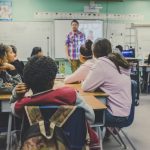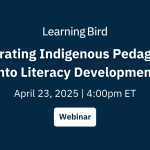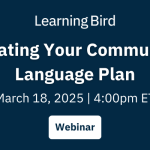Teach Real-World Entrepreneurship and Business Skills
Entrepreneurship is an area of study that is difficult to define. What skills does an entrepreneur need? How can they develop these skills in a typical classroom setting? There is a perception that many entrepreneurs today are self-taught or have a natural knack for generating business ideas and bringing them to life. Upon closer look, entrepreneurs have developed the ability to think critically, identify problems, and generate solutions while creating a team to fill gaps in knowledge or expertise. As an educator, the question becomes, how can my learners develop these abilities?
Identifying problems and critical thinking are key components of any challenging and rigorous curriculum. Through experiences such as Genius Hour, Problem-Based Learning, and Authentic Assessments, educators challenge learners to think critically and creatively. They must identify the problem and create the solution. What a great start!
Alongside soft skills like thinking critically, identifying problems, and generating solutions, learners must be 21st-century literate. Learners must be skilled communicators and synthesize knowledge from across the curriculum. Today, we will move beyond classical educational models to help learners develop new skills for a new era.
21st Century Skills
The Partnership for 21st Century Learning identifies four imperative outcomes for learners in the 21st century. These include Content Knowledge and 21st Century Themes, Learning and Innovation Skills, Information, Media, and Technology Skills, and Life and Career Skills. The first and second outcomes encompass the traditional mission of K-12 education. More and more, the latter two outcomes are important to all learners, not just those seeking entrepreneurial education.
Information, Media, and Technology Skills
Information, media, and technology skills require the development of literacy in each area and the acquisition of experience. It is challenging to encourage learners to move beyond the classroom to research online. Learners will encounter new forms of information as the news and print media shift to increasingly digital formats. Learners will access this information via a vast array of information technology.
Some school districts have increased their subscriptions to such research tools as Gale, EBSCO, or JSTOR to increase learners’ access to information. Access to updated, peer-reviewed resources provides current information without replacing the text-based sources of the past. Furthermore, relying on various media sources in the classroom can provide a model for learners to approach such sources. Just as writing helps learners create branded information and select how to communicate an idea, media also curates an experience for its users. Learners need to encounter this information. Lastly, technology increases exposure to information and media sources. Whether communication or social media technology, learners must learn the parameters of their tools and how to deploy them best.
Incorporate New Tools and Ideas in the Classroom
And, learners can learn these things in the classroom! English, history, and science classes often require learners to conduct research. Such experiences, although “traditional,” can incorporate new tools and ideas. Moving beyond the encyclopedias and printed texts of old and into the digital research world will enable learners to experiment with finding and using information.
For instance, in a paper on the antiquated text Silas Marner, online sources enable learners to find the early 1900s text, contemporary book reviews, and recent critical interpretations. A history teacher might incorporate media studies into a lecture on the Vietnam War, allowing learners to review historical facts and data against media interpretations that affected the attitude of a nation. By exposing learners to such information through modelling, learners can utilize such analysis in their research. In the same way, a physics or engineering class might create 3D printing models to highlight how design, material, and math can intersect. Giving learners hands-on technology experience in a safe, risk-friendly environment teaches them to push the limits of the technology in new and creative ways.
Life and Career Skills
Life and career skills encourage learners to think beyond the classroom walls. For instance, a career panel including doctors, physician’s assistants, physical therapists, and athletic trainers can provide an enriching experience and introduce models of professionalism to learners interested in sports medicine. These models can be resources for learners to develop their pathways through careers. Furthermore, integrating internship experiences into the learning environment through Problem-Based Learning is the most authentic assessment a learner could have! Learning through job shadows and reflection, executing tasks in a work environment, and learning new job-specific skills prepare learners to apply the knowledge they have already mastered while opening new doors for exploration.
By preparing our learners to master 21st-century skills, focused on readiness to contribute to the wider world, our learners will become agents of their successes. Empowered learners will learn valuable transferable skills – a hallmark of the entrepreneurial spirit!
A New Twist on the Classics
Just as our learners develop 21st-century transferable skills, they must also develop deep content knowledge. Learners should view the information learned in a classroom as a case study. Certainly, understanding the causes of WWI or how atoms bond in different ways are important pieces of information in their own right. However, the process of learning and connecting these facts to other pieces of information is an even greater goal. By showing a student how to analyze connections between isolated pieces of information and by teaching a class to seek further examples of a given, we challenge them to create new knowledge. This process of knowledge creation is the basis for all entrepreneurial ventures.
The Basics
Without reading, we cannot access knowledge beyond those who speak to us. We cannot generate our own ideas without writing. We cannot solve complex problems involving costs, mechanics, and parameters without quantitative skills. Just as they were important a century ago, these cornerstones of American education hold an important place in entrepreneurial education.
First, learners must apply their critical reading abilities to various texts. Technical manuals, arguments, scientific studies, and fictional prose can inform and inspire ideas. By searching through such texts, learners gain knowledge of others’ past and present endeavours to find solutions.
Next, learners must write. Writing encourages a learner to share ideas. It enables one to process ideas, particularly through the editing process, to review and revise with others. Writing communicates goals and sets parameters. It helps to create a brand. An entrepreneur will be unable to move forward without writing memos, emails, or research documents.
Lastly, learners must describe their work qualitatively and quantify success. In an age where numbers are often the most important element of a project, statistical significance, cost analysis, or mechanical specifications could make or break a product. Although these ideas are commonplace, it is important to reiterate that a learner seeking to develop entrepreneurial skills must focus on the primary tenets of education. Achieving success in gathering, communicating, and analyzing information occurs when learners master and apply these skills in new ways.
Elective and Enrichment Education
A robust curriculum allows learners to develop content knowledge outside traditional subjects. Electives like marketing, accounting, personal finance, graphic design, engineering, app development, and markets and management enable learners to go beyond math, science, history, and English. Developing content knowledge in such areas is important in the same way as learning in traditional classrooms. Here, learners of different backgrounds can collaborate to market a product or analyze and forecast profits. Learners might learn how to work as a team, but rather than creating a post-presentation on the Cold War, they build a hovercraft. Such electives can encourage learners to develop and produce products and foster creative ideas that don’t quite fit into traditional classrooms.
Enrichment allows the same to occur but focuses more on the classroom topics. Where learners in the classroom might study the birth of European nations, an enrichment program can expose them to the modern European Union and ask the learners to compare the founding principles. Learners could have the opportunity to read Shakespeare and produce a play. These enrichment experiences bring creativity and interdisciplinary work into the classroom. They encourage learners who excel in various domains to move beyond simply reading a text or studying a topic. Now, they can apply their knowledge—such application models how to produce solutions creatively, which is the basis for entrepreneurship.
A Final Word
Structuring an educational program around developing entrepreneurial-minded learners is a difficult task. It adds one more focus to the curriculum. It challenges educators to think outside of the box. And, it asks administrators to look beyond data and into creativity. But, it seems that the schools where this idea is most successful are the ones that created the space to do so. Individuals or teams with skills to identify a problem, the desire to develop a solution, and critical thinking to form viable products and ideas drive entrepreneurship. When we teach learners to communicate effectively, think critically, analyze the world around them, and give them space, opportunity, and support, entrepreneurship education is born.
References
The following served as references for this post. They also provide extensive research and suggestions for administrators interested in incorporating entrepreneurship into a curriculum.








